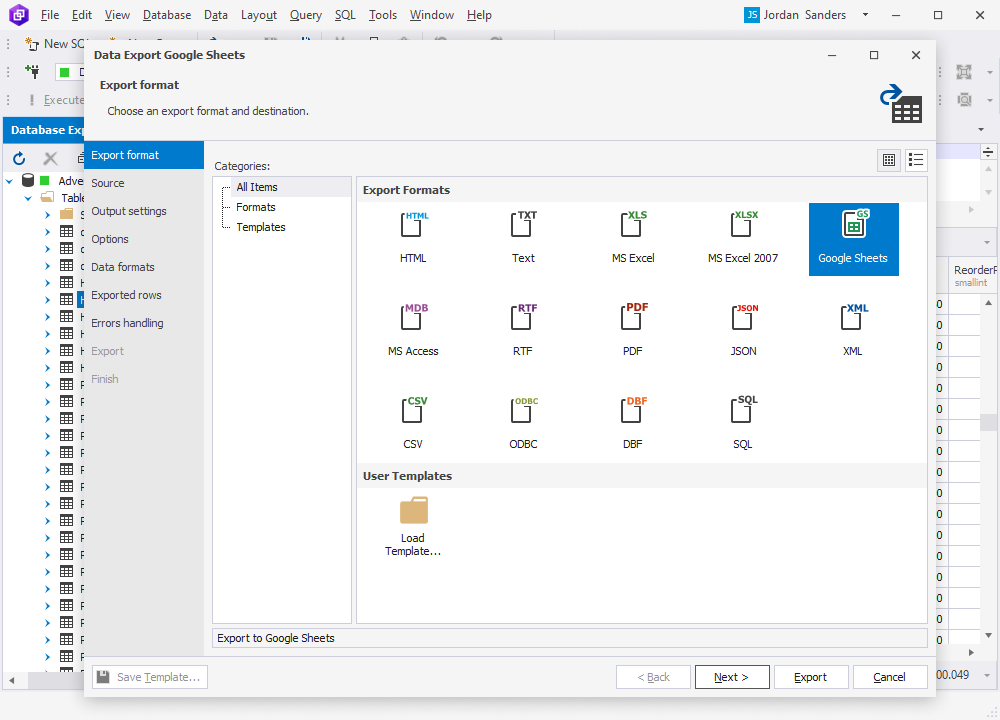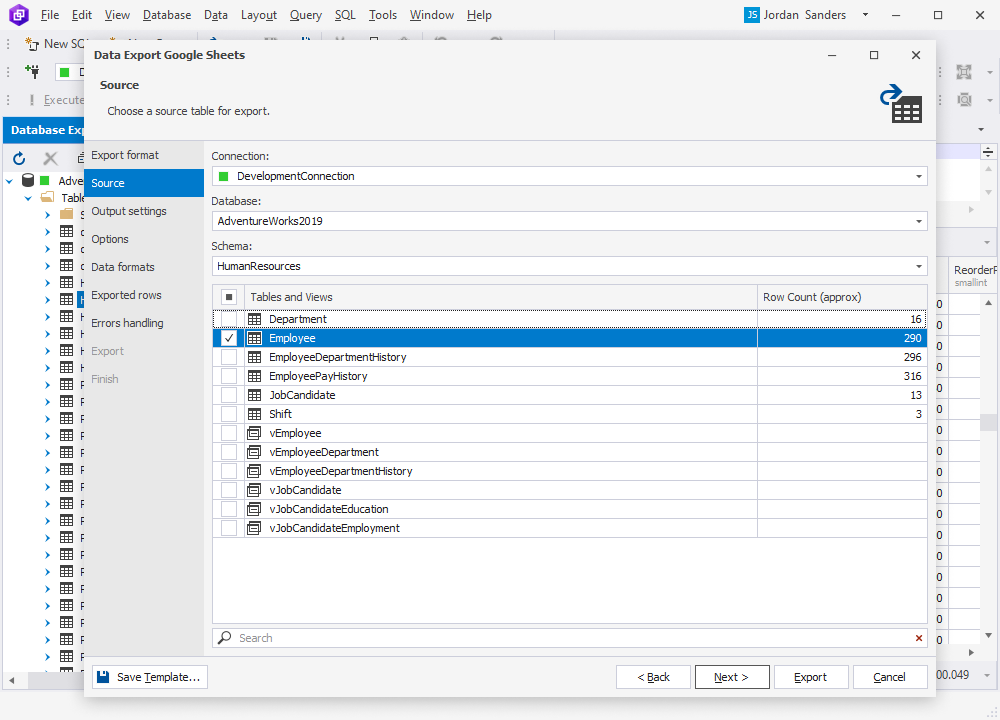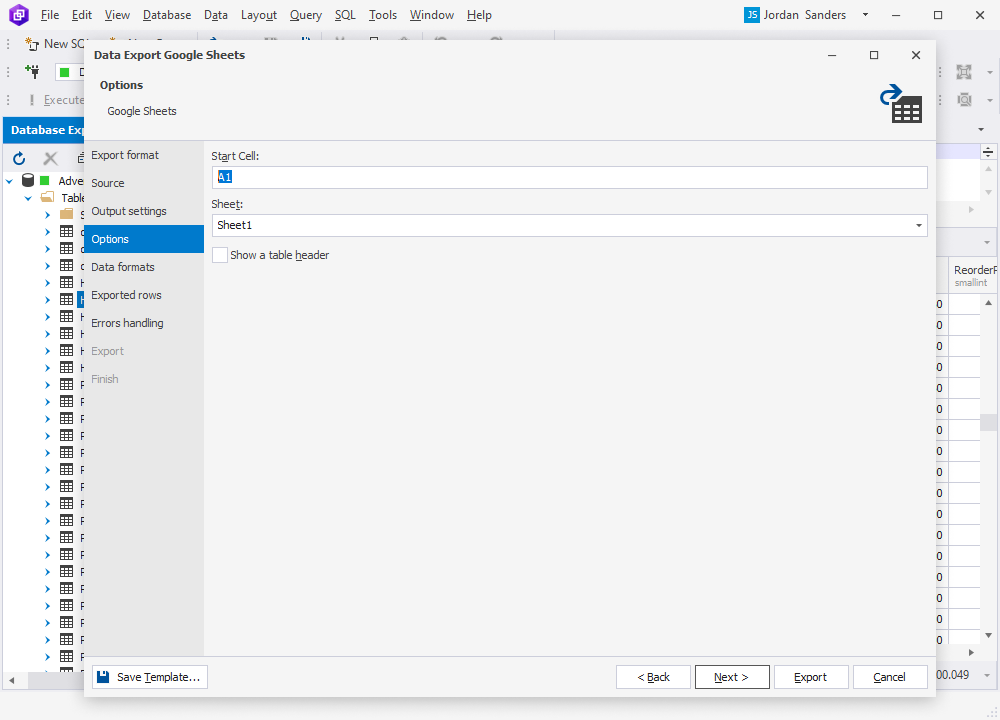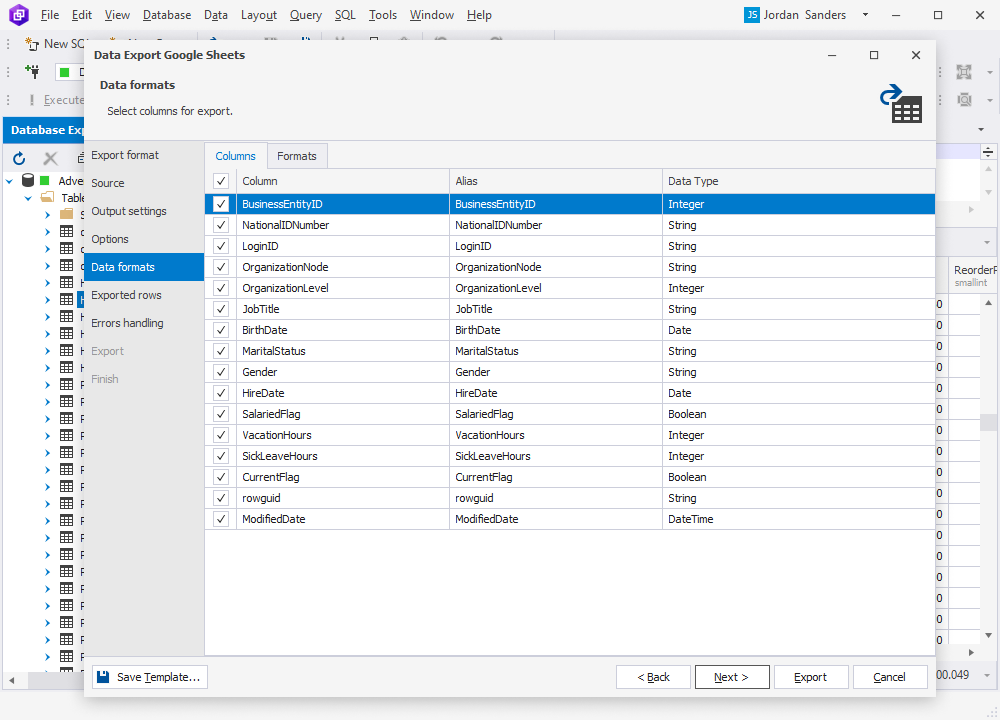How to export SQL Server data to Google Sheets
Google Sheets is the world’s most popular free collaborative spreadsheet application.
To export data to Google Sheets:
1. In Database Explorer, right-click the required table or selected data in the grid, and then select Export Data from the shortcut menu.
Note
Query Builder comes with Paginal Mode enabled by default, limiting data selection to the first 1000 records. To export more records, disable the Paginal Mode and press Ctrl+End to fetch all the selected data at once. Then, click
Export Data at the top of the grid to open the Data Export Wizard.
2. On the Export format page, select the Google Sheets export format or load export options from a template file if you saved it previously. Click Next.

3. On the Source page, select a server connection, a database and its schema, a table or view that you want to export, and click Next.

Note
Export to Google Sheets from multiple sources is not supported.
4. On the Output settings page, specify the required Google Spreadsheet ID/URL.
Note
After you insert the required URL and click Next, Query Builder opens the browser for you to select the required Google account and allow dbForge to access your Google spreadsheets. If you do so, you will receive an email confirming that dbForge was granted access to your linked Google account.
5. On the Options page, you can set the table grid options for exported data: text and background colors and fonts in Header and Rows, as well as width and color of Borders. The results of your configuration are shown in Preview.

6. On the Data formats page, you have two auxiliary tabs. The first one is Columns, where you can select columns for export and check their aliases and data types.
The second one is Formats, where you can change the default format settings for Date, Time, Date Time, Currency, Float, Integer, Boolean, Null String, as well as select the required binary encoding from the drop-down list.

7. On the Exported rows page, you can select to export all rows, export the rows selected on the Data formats page, or export a specified range of rows.
8. On the Errors handling page, you can specify the error processing behavior (using one of the three available options: Prompt the user for an action, Ignore all errors, or Abort at the first error) and opt to write reports to a log file with a specified path.
Note
If you want to save your export settings as templates for recurring scenarios, click Save Template.
9. Click Export. When your data export is completed, you have several options: you can open the exported file or folder, perform another export operation, view the log file, or simply click Finish.